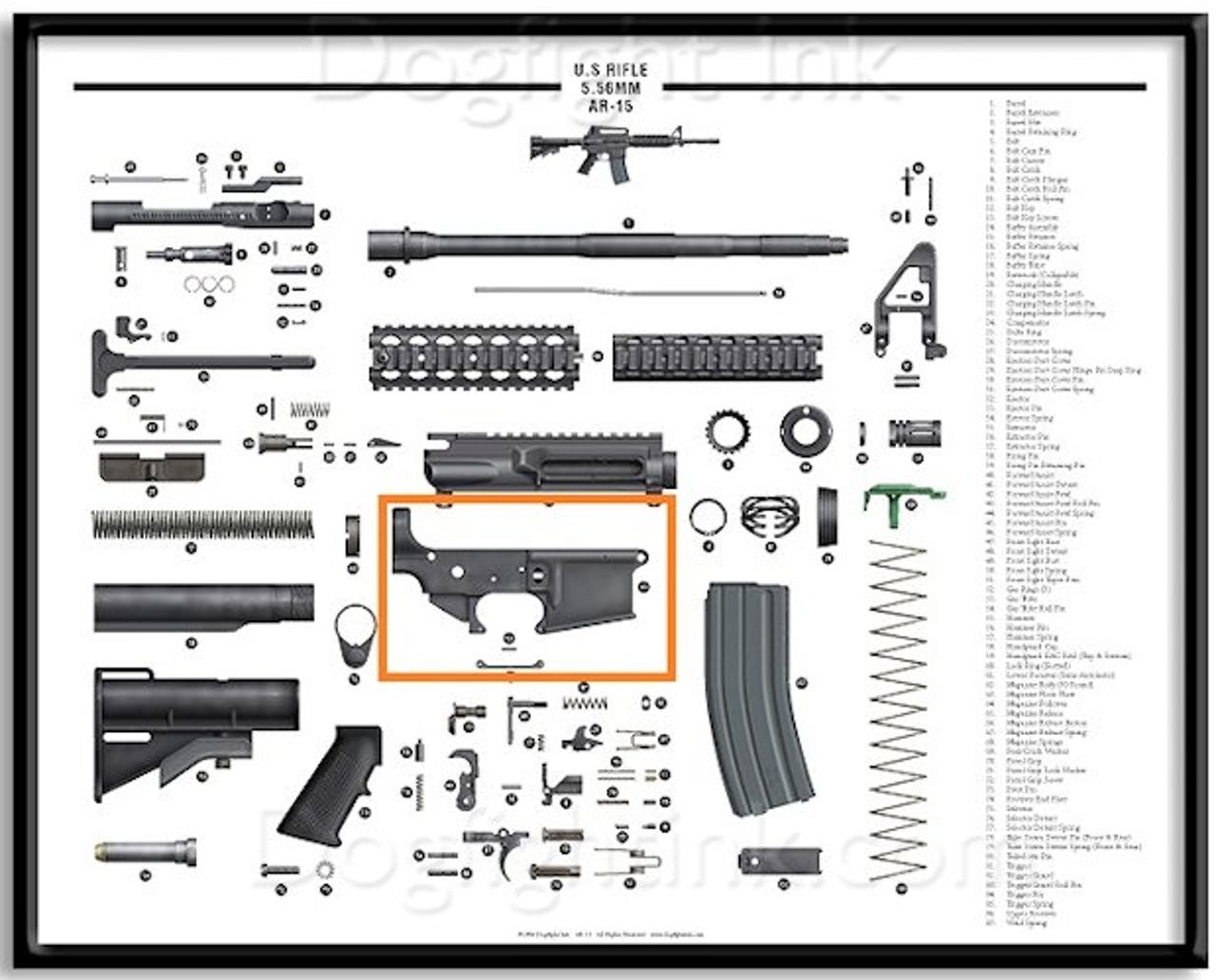No, you can’t download a gun from the Internet

In the truest spirit of chicken little, Internet sites, from random political blogs, to supposedly valuable sources such as Popular Science, to Internet pundits who should know better how to research their stories, have been piling on to a clever bit of disinformation, in the wake of the Aurora, Colorado tragedy. They have been either claiming or implying that it is now possible for someone with nothing more than a 3D printer to be churning out assault rifles in their spare time. One site went so far as to actually say that just add materials at one end of your late model 3D printer and you could have an “assault rifle” pop out the other.
Many have illustrated their writing with pictures of complete firearms, leaving the reader to draw the conclusion that this is what has been printed. Unfortunately, it’s almost all nonsense, written in ways to attempt to draw the reader away from the actual facts and generate as much hysteria as possible. The facts, however, aren’t quite so hyperbolic.
A firearms enthusiast, who uses the screen name “HaveBlue” (an homage to the stealth aircraft prototype), in June blogged about his efforts to use his 3D printer to print an AR15 lower receiver. An AR-15 lower receiver is only a firearm courtesy of the fact that when commercially produced, the serial number is on that part. The AR upper receiver is where the barrel is attached and all of the mechanical action beyond pulling the trigger takes place. Printing an AR upper and then assembling a firearm on it would be much more problematic due to the heat and nature of the way an AR functions.
An AR lower, which is what HaveBlue printed, is basically a non-stressed part, and commercial products made of plastics, polymers, and carbon fiber have long been available. Traditionally, the part is made from aluminum alloy.
After some trial and error, HaveBlue was able to print an AR lower, and then with much additional handwork, he was able to assemble with a large collection of regular firearms components into a functional .22 caliber pistol. An AR lower is the housing for the fire control and magazine retention parts and the mounting point for the rifle stock. A complete, functional, lower receiver contains over 40 individual parts; 3D printing provided only one of those 40-some parts. And that is still only half of the firearm.

If you look at the attached graphic, the part outlined in red was what was printed. The rest of the parts would still need to be purchased or acquired.
HaveBlue has since assembled his printed lower with the collection of parts necessary to have a functional centerfire rifle, but has yet to achieve any sort of reliable function. For the complete story of how he printed his part and what it has taken to make it function you can go directly to the source, his blog at http://www.haveblue.org.
If you still think that you’ll be able to print a complete firearm in the near future consider this; the Sporting Arms and Ammunition Manufacturer’s Institute standard for chamber pressure for a .22 LR round, generally the smallest and lowest pressure rifle or handgun caliber, is 24,000 PSI, far beyond the thermoplastic capabilities used in most 3D printers. And just as a reference point, the SAAMI specification for .223, used in the commercial versions of the AR-15, is 55,000 PSI.
Once you mention firearms, many people’s minds just seem to stop functioning logically. 3D printer aficionados fear that they will become the 21st century equivalent of the samizdat producers of the Soviet Union. I’ve seen claims from otherwise intelligent writers stating that they heard people are using their 3D printers to print AK-47s. There has been much crying, whining, and tearing of clothes as some pundits have bemoaned the fact that they will never be able get control of guns away from the public, if anyone can just print a gun.
The capability for an individual to produce a firearm at home is not a new one. And I’m not talking about handcrafted muzzle loading replicas of 18th century pieces. In other countries, craftsmen have been building copies of bolt action firearms using nothing more than hand tools and dedication. And many semi-automatic firearms that are still in use today were designed using nothing more than early 20th century standard industrial equipment.
Plus any home hobbyist who purchased one of the complete work lathes for home use advertised in wood and metal working magazines for almost 100 years is capable of building a complete firearm from scratch, using well documented and time tested techniques that would give the person a completely functional and useful firearm made completely with their own hands. Not a printed firearm part that requires additional hands-on work and another 50 commercially manufactured pieces to be a functional gun.